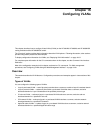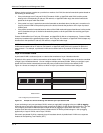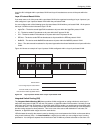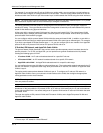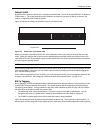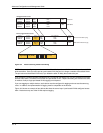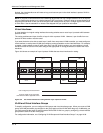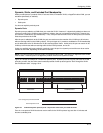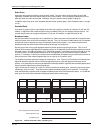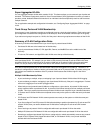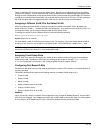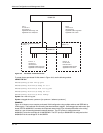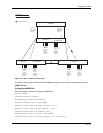
Advanced Configuration and Management Guide
16 - 8
blocked, the virtual interface can still route so long as at least one port in the virtual interface’s protocol VLAN is
not blocked by STP.
NOTE: If you plan to connect the device to networking devices that run only a single instance of STP on all ports,
you can configure the device to run a single instance of STP on all ports. However, doing so causes the device to
stop using the individual VLANs you have configured and instead places all ports in a single logical VLAN, which
is VLAN 4094. See the addendum or release notes shipped with your product for information.
Virtual Interfaces
A virtual interface is a logical routing interface that routing switches use to route Layer 3 protocol traffic between
protocol VLANs.
The routing switches send Layer 3 traffic at Layer 2 within a protocol VLAN. However, Layer 3 traffic from one
protocol VLAN to another must be routed.
If you want the device to be able to send Layer 3 traffic from one protocol VLAN to another, you must configure a
virtual interface on each protocol VLAN, then configure routing parameters on the virtual interfaces. For example,
to enable a routing switch to route IP traffic from one IP sub-net VLAN to another, you must configure a virtual
interface on each IP sub-net VLAN, then configure the appropriate IP routing parameters on each of the virtual
interfaces.
Figure 16.6 shows an example of Layer 3 protocol VLANs that use virtual interfaces for routing.
Figure 16.6 Use virtual interfaces for routing between Layer 3 protocol VLANs
VLAN and Virtual Interface Groups
To simplify configuration, you can configure VLAN groups and virtual interface groups. When you create a VLAN
group, the VLAN parameters you configure for the group apply to all the VLANs within the group. Additionally, you
can easily associate the same IP sub-net interface with all the VLANs in a group by configuring a virtual interface
group with the same ID as the VLAN group.
For configuration information, see “Configuring VLAN Groups and Virtual Interface Groups” on page 16-39.
User-configured port-basedVLAN
Protocol VLAN, IP sub-net VLAN,
IPX network VLANor AppleTalk VLAN
VE 2
VE 1
VE 4
VE 3




